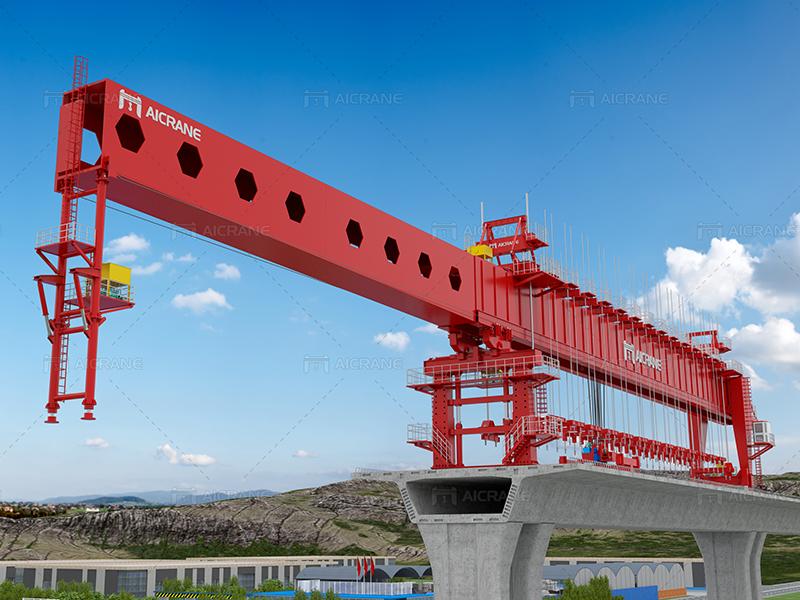In the realm of civil engineering and infrastructure development, the construction of bridges stands as a testament to human ingenuity and technological prowess. At the heart of this marvel lies an array of specialized cranes, each designed to tackle unique challenges posed by bridge construction. In this article, we will delve into the world of cranes, exploring their crucial roles and focusing on specific types like rubber tyred gantry cranes, segment launching gantry cranes, and more.

Rubber Tyred Gantry Cranes (RTGs)
Rubber Tyred Gantry Cranes, commonly known as RTGs, are a staple in bridge construction due to their versatility and efficiency. These rubber tyre gantry cranes are characterized by their rubber tires, which allow them to traverse various terrains with ease. RTGs are often used in the early stages of bridge construction to handle materials such as steel and concrete components.
The mobility of RTGs makes them suitable for navigating construction sites, and their ability to lift heavy loads ensures the efficient assembly of bridge elements. Additionally, RTGs are equipped with advanced control systems, enabling precise positioning and movement, crucial for the intricate tasks involved in bridge construction.
Segment Launching Gantry Cranes
Segment Launching Gantries play a pivotal role in the construction of bridges with span-by-span or balanced cantilever methods. These cranes are designed to handle precast segments, which are key components in building the spans of a bridge. The segment launching gantry moves along the bridge alignment, placing precast segments in a sequential manner.
The advantages of segment launching gantry cranes lie in their ability to streamline the construction process, ensuring a continuous flow of work without compromising safety. With precise control mechanisms, these cranes allow for the accurate placement of segments, resulting in a seamlessly constructed bridge.

Crawler Cranes
Crawler cranes are heavyweight champions in the construction industry, well-suited for tasks that demand high lifting capacities. In bridge construction, crawler cranes are deployed for activities such as setting large structural components like steel beams or placing heavy machinery.
The distinctive feature of crawler cranes is their mobility on tracks, which provides stability and allows them to move across rough or uneven terrains. This adaptability makes crawler cranes indispensable in bridge construction projects that require heavy lifting capabilities in challenging environments.
Tower Cranes
Tower cranes are a common sight on urban construction sites, but their role extends beyond building skyscrapers. In bridge construction, tower cranes are often used to handle materials, equipment, and components in a controlled and efficient manner.
The height and reach of tower cranes make them suitable for bridge projects that involve the construction of pillars, towers, or elevated sections. These cranes for bridge construction are known for their ability to lift heavy loads to considerable heights, providing the necessary flexibility to work on elevated sections of a bridge.
Mobile Cranes
Mobile cranes are versatile workhorses, capable of moving easily from one location to another within a construction site. They come in various configurations, including rough-terrain cranes and all-terrain cranes, making them adaptable to different environments.
In bridge construction, mobile cranes play a crucial role in tasks such as material handling, equipment installation, and lifting components into place. Their ability to swiftly navigate construction sites contributes to the overall efficiency of the project.
Conclusion
As we marvel at the engineering feats of modern bridges, it is essential to recognize the unsung heroes behind the scenes – the cranes. Rubber tyred gantry cranes, segment launching gantry cranes, crawler cranes, tower cranes, and mobile cranes all play vital roles in the intricate dance of bridge construction. Their versatility, precision, and lifting capacities make them indispensable in turning architectural visions into tangible structures that connect communities and facilitate progress. As technology continues to advance, the evolution of crane design and capabilities will undoubtedly contribute to even more remarkable and efficient bridge constructions in the future.